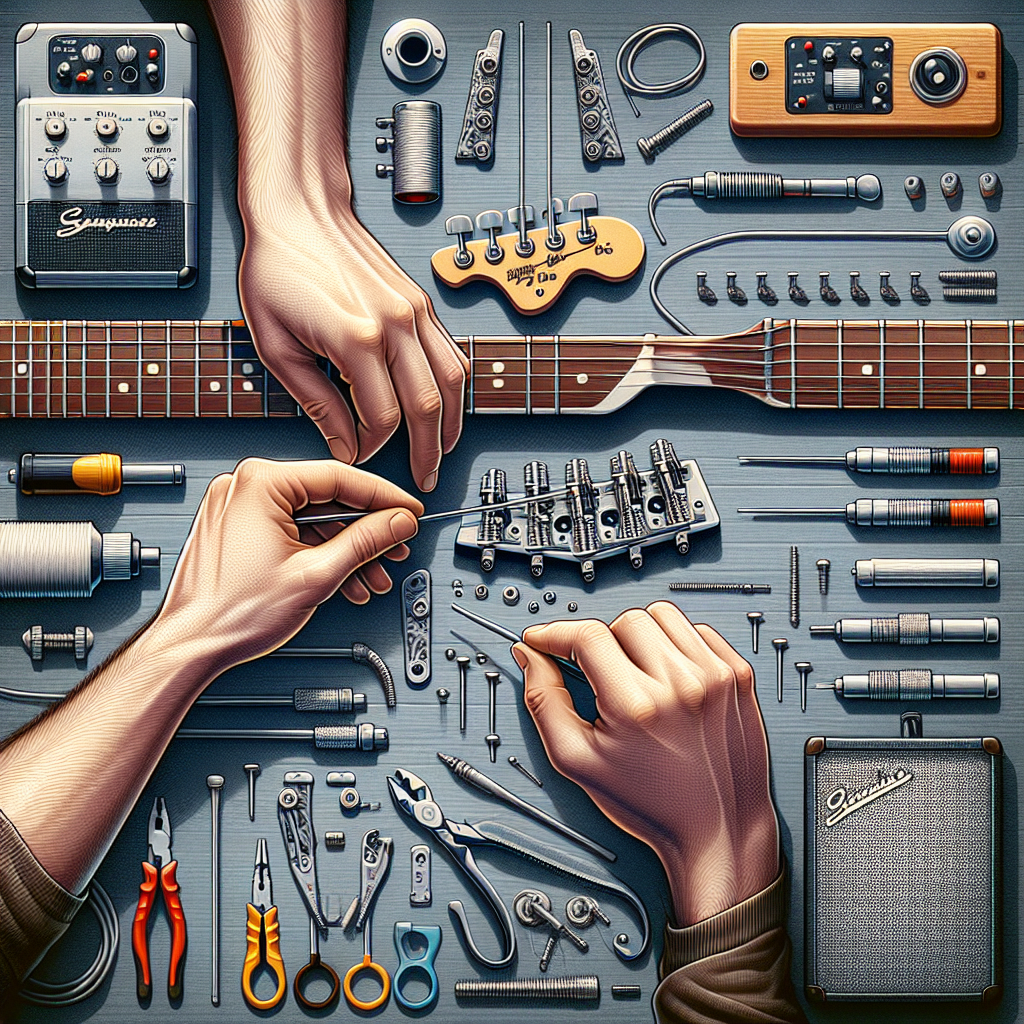
A Guide to the 7 Spectacular Guitar Bridge Types You Need to Know
When it comes to crafting your perfect sound on the guitar, the bridge plays a pivotal role. It may appear as just another component, but the type of bridge on your guitar has a significant impact on tone, intonation, and playability. With so many varieties available, it can be challenging to choose the right one. We’re here to help with this comprehensive guide to the most popular guitar bridge types, breaking down their features, benefits, and which might be the best fit for your musical style.
1. Fixed Bridge
The fixed bridge, also known as a hardtail, is renowned for its stability and straightforward design. This bridge type is mounted directly onto the guitar’s body, allowing for consistent tuning and fewer maintenance challenges. A fixed bridge is ideal for beginners and those who favor genres like rock and blues, where stability is a priority.
Advantages:
- Stable tuning with minimal maintenance.
- Easy to restring and handle.
Fixed bridges are simple and great for straightforward playing styles, making them a favorite among many guitarists. Explore more about fixed bridges on Ultimate Guitar.
2. Tremolo Bridge
Tremolo bridges are known for enabling guitarists to infuse expressive pitch variations in their music. A tremolo bridge features a lever called a “whammy bar” or “tremolo arm” that lets you adjust string tension and pitch on the fly.
Advantages:
- Allows for dynamic pitch modulation.
- Perfect for rock, metal, and surf music.
The ability to create vibrato effects on chords and single notes can add nuance to a performance, making the tremolo one of the most versatile bridge types.
3. Floyd Rose Locking Bridge
The Floyd Rose is the pinnacle of whammy innovation that provides extreme tuning stability while allowing for radical pitch alterations. Its locking mechanism clamps the strings at the nut and bridge, minimizing tuning changes during heavy whammy use.
Advantages:
- Outstanding tuning stability with heavy whammy action.
- Great for dive bombs and extreme pitch shifts.
This bridge type is popular among metal and shred guitarists who require stability alongside maximum changeability in pitch.
4. Tune-O-Matic Bridge
The Tune-O-Matic bridges, often coupled with a stopbar tailpiece, are common on Gibson guitars. This design offers adjustable saddles, which allow for precise intonation adjustments, making it a preferred choice for many professional musicians.
Advantages:
- Easy intonation adjustments.
- Classic look and versatility.
With its ability to fine-tune each saddle for optimal string height and accuracy, the Tune-O-Matic delivers a perfect blend of tradition and functionality.
5. Bigsby Vibrato Bridge
The Bigsby bridge is one of the earliest examples of a tremolo system, known for its smooth, subtle pitch modulation capabilities. Unlike the more aggressive equivalents, it offers gentle vibrato effects, ideal for rockabilly, country, and jazz genres.
Advantages:
- Classic design and aesthetic appeal.
- Good for light vibrato effects without dramatic pitch shifts.
Its elegant appearance and ability to add a touch of shimmer to your sound make the Bigsby a beloved choice for vintage oriented guitarists.
FAQs
1. What is the best bridge for beginners?
For beginners, a fixed bridge is often recommended due to its simplicity and stability. It’s less complex to set up and maintain compared to bridges that offer pitch modulation.
2. How does a tremolo bridge affect a guitar’s sound?
A tremolo bridge allows a guitarist to add expressive pitch variations to their playing. This can influence the overall tone and feel of the music, making it more dynamic.
3. Why might I choose a Floyd Rose over a standard tremolo?
A Floyd Rose locking bridge is perfect for guitarists who frequently use the whammy bar for drastic pitch changes but wish to maintain tuning stability. It is favored in genres like metal where extreme pitch adjustments are common.
4. Can I convert a hardtail into a tremolo bridge?
It is technically possible but often requires significant modifications to the guitar body and may affect its resale value or structural integrity. It’s usually more prudent to purchase a guitar specifically designed with the desired bridge type.
5. Are there bridges that combine different features?
Some modern bridges, like the PRS tremolo or certain Wilkinson models, offer a hybrid design that blends features of different bridge types, providing flexibility in playing style and sound.
6. Does the bridge material affect the guitar’s sound?
Yes, the bridge material can influence the tone and sustain of a guitar. Materials like steel, brass, or aluminum all offer different sonic characteristics, impacting the brightness, warmth, or sustain of the sound.
Conclusion
The choice of a guitar bridge can significantly impact not only your sound but also your playing comfort and style. Whether you’re leaning towards the no-nonsense stability of a fixed bridge or the sonic exploration allowed by tremolos and vibratos, understanding each type’s features and benefits can help you make an informed choice. Dive deeper into guitar details and explore various options to find the bridge that resonates with your musical journey. Remember, your choice in bridge is more than just about string tension; it’s about finding your unique voice on the guitar.